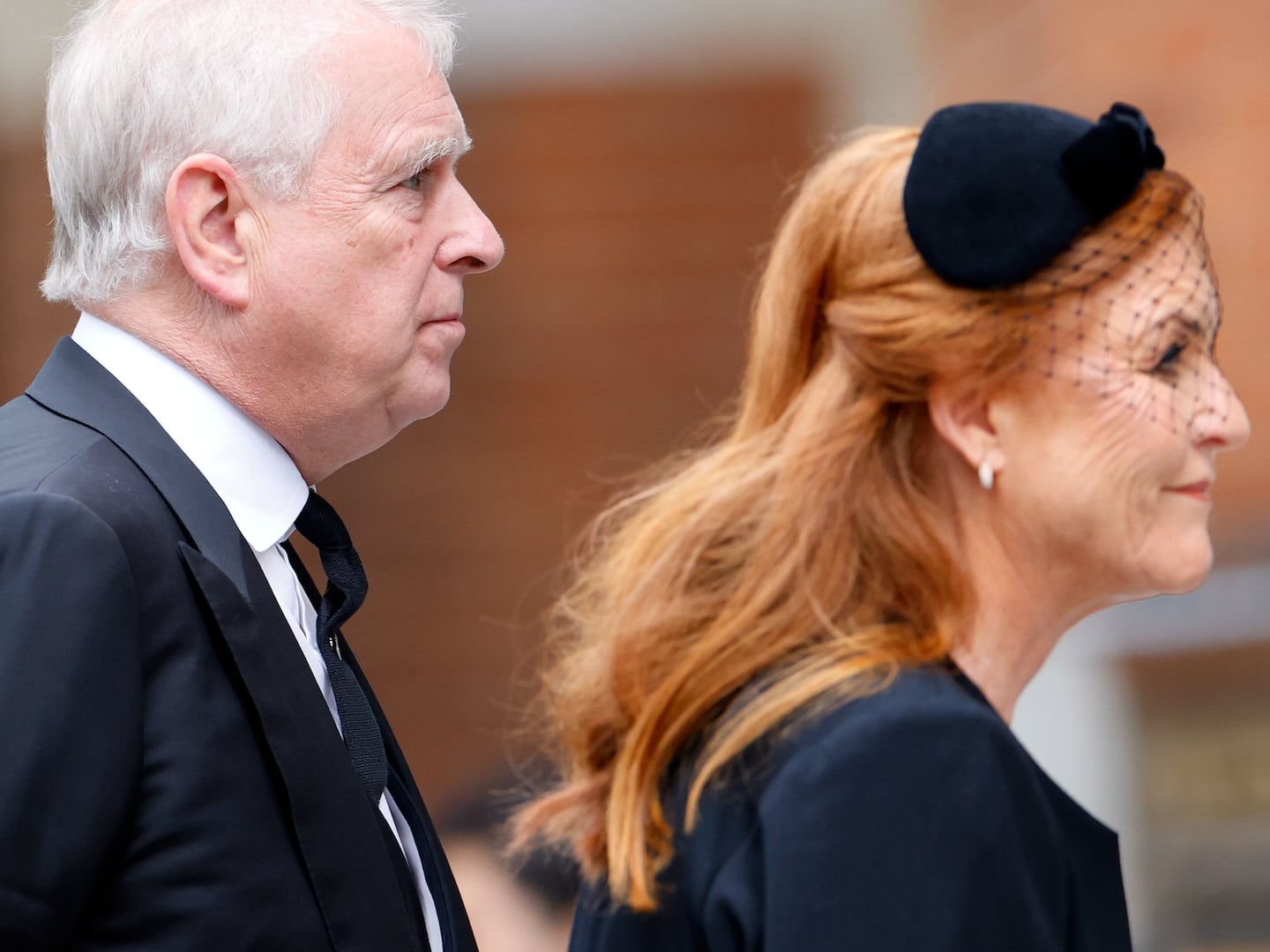When ISIS released that unspeakable video of the captured Jordanian pilot being burned alive, there seemed to be nothing more barbarous the monsters in black could do.
But by some measures it was crueler to release no images at all after ISIS announced that 26-year-old Kayla Mueller had been killed in one of the air strikes that Jordan unleashed in revenge.
Her family and friends were left with questions that are their own kind of torture.
Was she really dead?
If she was, how did she die?
When did she die?
Did she suffer?
Where was her body now?
Or is it possible that ISIS is perpetrating a diabolical hoax?
Is it possible she is still alive?
Her parents were likely filled with an urgent wish that families so often voice in emergency rooms when told a loved one has met a violent death.
“I want to see her!”
In the absence of any proof that she was indeed dead, Mueller’s parents chose to answer horror with hope. They sent a private message to ISIS and followed it with a public one.
"This news leaves us concerned, yet, we are still hopeful that Kayla is alive. We have sent you a private message and ask that you respond to us privately. We know that you have read our previous communications, [kidnapped British journalist] John Cantlie made references to them in October.”
The parents then referred to a message they had received from ISIS, perhaps back when she was first kidnapped more than a year ago.
“You told us that you treated Kayla as your guest, as your guest her safety and well-being remains your responsibility. Kayla's mother and I have been doing everything we can to get her released safely.”
As they wait with the hope that there will be no proof of her death because there is no death to prove, the parents are kept in a state of disbelief that can only be excruciating.
Just the slightest chance she might still be alive must make all the more intense an overwhelming need that the families of murder victims almost invariably feel.
They need to see the person, touch the person, kiss the person.
And what a person she was.
Kayla Mueller was the best of us, an American in the truest sense, devoting her young life to helping those in dire distress.
“Kayla found this work heartbreaking but compelling; she is extremely devoted to the people of Syria,” her family said in a statement. “When asked what kept her going in her mission, she said, ‘I find God in the suffering eyes reflected in mine, if this is how you are revealed to me, this is how I will forever seek you.’”
She started out in school with the Save Darfur Coalition and then set off to India, where she taught English to Tibetan orphans. She returned to her native Prescott, Ariz., and worked at a woman’s shelter as well as an AIDS/HIV clinic.
In late 2012, she headed for Turkey’s border with Syria. She had fallen in love with a Syrian activist, but her overriding passion remained the same.
Among the Syrian refugees, she showed that an American is a sparkly young woman who helps children recover from the psychological traumas of war.
“We give and get joy from playing with these children,” Mueller later said in a speech back home that was reported in the local Daily Courier.
She encouraged the children to make a picture of the place they would most want to be. She watched them draw the homes they had been forced to leave.
“They told us everything about their house,” Mueller reported in her speech. “They said, ‘There’s a tree in front of my house that I climb.’ ‘There’s this squeaky door that my dad never fixed.’”
As ISIS was poised to introduce itself to the world with videos of executions, Mueller went through the chaos of a bombed refugee camp with a video image of a missing six-year old boy that the child’s frantic father had given her..
Mueller kept searching and finally found the boy at a hospital as he was coming out of surgery. The boy’s mother had been killed, but at least he was reunited with the father
“This story is not rare in Syria,” Mueller said in her speech. “This is the reality for Syrians two and a half years on. When Syrians hear I’m an American, they ask, ‘Where is the world?’ All I can do is cry with them, because I don’t know.”
But America was right there, in the person of Kayla Mueller.
In August of 2013, Mueller and her Syrian boyfriend had just been at another hospital, one run by the Spanish Doctors Without Borders in the Syrian city of Aleppo, when she was kidnapped.
The kidnappers released the boyfriend, but kept her and demanded a ransom that was reportedly in excess of $6 million.
ISIS sent the family proof of some kind that she was alive. But each moment brought the fear that it might be her last and Prescott must have seemed impossibly far away from the turf of ISIS. All her family could do was wait and hope, day after day after day.
At one point, the U.S. military reportedly mounted an attempt to rescue her and her fellow hostages. The Special Forces team swooped in to find the hostages had been moved no more than a few days before. The would-be rescuers did recover strands of hair that proved to be a DNA match with Mueller.
Mueller continued to be held elsewhere along with a number of male American hostages. Three of them were beheaded, as were two Englishmen. Four Frenchmen were released, including Nicolas Henin.
“Kayla Mueller was among the very last of my former cellmates still detained,” Henin tweeted on Friday. “I was full of hope she could have a way out.”
Her family asked reporters not to refer to her by name, lest it place her in greater jeopardy. The kidnappers are said to have demanded that the ransom be paid by August of 2014. The deadline passed without apparent event.
Even as ISIS released videos of male hostages being beheaded, even after a report that one of the captors had bragged about having once raped a mother and beheaded her baby, there was still the hope that the monsters in black would not murder a completely blameless woman such as Mueller.
Then, ISIS burned alive the Jordanian pilot. The Jordanian king vowed revenge, reportedly citing the Clint Eastwood movie, “Unforgiven.”
The vengeance began with the hanging of two jihadi prisoners. One was the female suicide bomber Sajida al-Rishawi and that sparked fears that ISIS would retaliate by murdering its sole female Western hostage, Mueller.
Jordan proceeded with airstrikes that it pledged would “open the doors of hell.”
On Friday, ISIS announced that Mueller had been killed when a Jordanian bomb struck the building where she was being held.
“The failed Jordanian aircraft killed an American female hostage,” ISIS said in an online message. “No mujahid was injured in the bombardment, and all praise is due to Allah.”
The claim that Mueller had been killed but none of her captors even injured undermined the credibility of the report. She surely had not been left unattended in the building where ISIS said she had perished.
And Mueller’s supposed death seemed too convenient a way for ISIS to undercut the righteousness of Abdullah’s vengeance.
The hero in Unforgiven does not kill an innocent woman and fail to so much as wing the bad guys.
In an attempt to corroborate its claim, ISIS released before-and-after photos of an obliterated structure.
But for once ISIS passed up an opportunity to show the body of somebody who had met a violent death.
And here ISIS proved that its cruelty does not end with beheading and immolation.
Mueller’s family was left to continue wondering and hoping.
What was certain was this: ISIS had further proved itself the worst of the worst just as Mueller had long since proven herself the best of the best. Whether or not she is ever seen again, the God she found in the suffering eyes reflected in her own is there for all of us to find.





